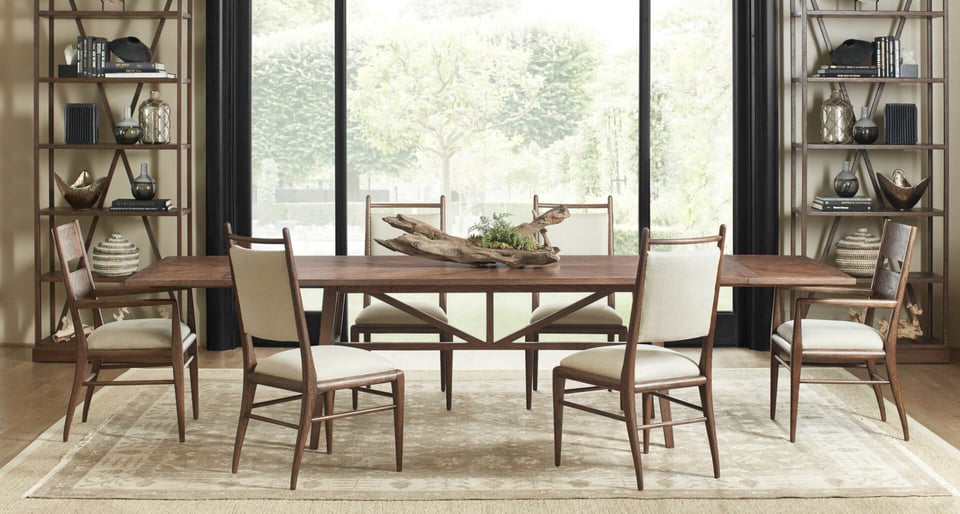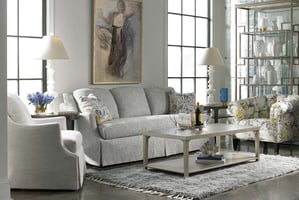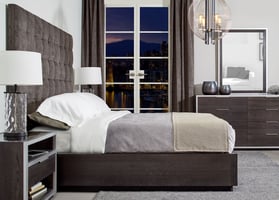Sherrill Furniture is a long-standing company, with quite the reputation as one of the leaders in...
5 Myths About Imported Furniture
"I don't want furniture that is made overseas.”
If that’s come out of your mouth before, you are certainly not alone in that sentiment. Oftentimes, we associate overseas production with poor quality, and because of that, we end up buying from manufacturers a little closer to home. Which is fine, but how frustrating is it when you find something that you absolutely LOVE, but when you see where it’s made, it automatically turns you off it.
You’re missing out on that perfect piece because you’re unsure of the quality and ethical practices behind that imported product!
We’ve weathered this concern before at McElheran’s Furniture + Design – and not just a few times, either. It’s a common reservation for a lot of our valued customers. We do deal with manufacturers from Canada and the US, but in an effort to give you the best quality, we’re happy to bring in products from all over the world.
Not all furniture is created equal, but there is that common misconception that North American made automatically means that it’s better – particularly in furniture. And many people, as soon as they hear something is made in an Asian country (like Vietnam or China), instantly assume that the quality of the product will suffer.
It’s true that there is some fantastically made furniture that comes out of North America, but it’s not all top tier, by any means. The same goes for manufacturers out of Asia, there’s a mix of poor and good quality. It’s definitely not all bad – far from it, actually.
In this article, Jeff McElheran of McElheran’s Furniture + Design will explain and debunk the common myths about imported furniture. If you have a better understanding of what goes on across the pond, you may not have to pass up on that piece of furniture just because it was manufactured somewhere else.
5 common myths about furniture made overseas
1. Furniture made overseas is lower quality
There are some extremely reputable brands that have factories overseas, like Theodore Alexander. And just because these factories are in a foreign country, does not mean that products are poorly manufactured.
Jeff McElheran saw firsthand the dedication and attention to detail that goes into every piece of furniture in one of these factories in Vietnam. He watched as employees painstakingly cut intricate veneers and hand-carved details into solid wood.
He says, “I don't think there are many craftsmen left in North America with the patience or skill to create some of these pieces of art.”
And if they are here in our continent, the price tag would be substantially more.
2. Imported furniture isn’t built for our climate
The climate in Asia is very different than in North America, and the high humidity overseas can wreak havoc on furniture production.
A good factory overseas, however, will dry the wood to North American standards before they make your new piece of furniture. Wood that is properly dried will limit potential warps and cracks in the furniture, as it acclimatizes to different continents and seasons.
-min.png?width=423&name=MYTHS-2(PNG)-min.png) 3. Furniture factory workers are not treated well overseas
3. Furniture factory workers are not treated well overseas
In North America, when you find a good employee, you make sure they’re treated well because you don’t want to lose them. It's no different in the good and ethical furniture factories overseas.
Some of the perks that employees have overseas would even be envied here in North America. We’re talking provided daily lunches, scheduled siestas, and even housing for employees! Seriously! Jeff McElheran has seen all of these perks in factories overseas.
These jobs are highly sought after because of the pay and the benefits. And as we’ve seen in any industry, the higher the job satisfaction, the more productive employees are.
4. A veneer is not as good as solid wood
Often used in furniture manufactured overseas, many think that a veneer over an engineered board represents poor quality - and it can - but not in all cases.
A veneer on a furniture grade medium density fibreboard (MDF) surface is actually more stable than solid wood because it’s less prone to warping. Plus, in the hands of a true craftsman, you can get beautiful veneer patterns that you just can't do with solid wood.
5. Imported furniture is cheap
No matter where you’re getting your furniture from, the old adage rings true: You get what you pay for.
While craftsmen’s wages may not be as high as in North America, they still are paid very well in other countries. And in a global market, good quality materials are just as expensive overseas as they are here. So, just because it's made overseas doesn’t necessarily mean that it’ll be cheap.
Quite simply, if you want something well-made, it’s going to be more expensive regardless of where it’s manufactured. Quality is universal and it always affects the final price tag.
“I don’t want furniture that is made overseas”
There’s that statement again. And you know what? If that’s your preference – that’s A-OK! It’s your furniture, you should be able to get it from wherever you’d like.
The takeaway here is that furniture that’s made overseas isn’t necessarily lower in quality than products from here in North America. There are some brilliant manufacturers close to home and great ones in other countries, too!
But if you are still leaning towards furniture that’s domestically manufactured, check out 5 Reasons to Buy Canadian Made Solid Wood Furniture.
Does McElheran’s carry furniture that’s made overseas?
Yes, we do.
Because we want to bring you the best furniture possible, we first look at the quality and style of a product – that’s our top priority. Where it’s made comes second.
Our in-house designers, known as Design Guides, would be happy to show you pieces in our expansive showroom that come from all over the world! Schedule a visit - we'd love to show you around.
At the end of the day, the choice is yours whether to buy imported furniture, but perhaps you’ll find that quality is quality, no matter where something is made.






